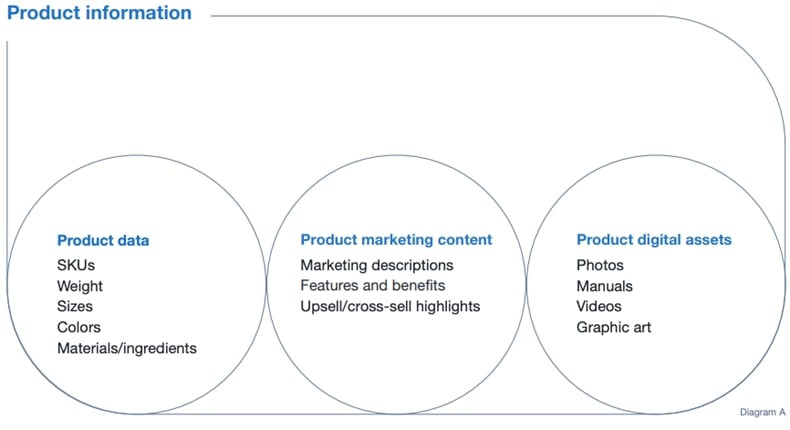Like countless other people who needed to set up a home office in March 2020, I went shopping online for a standing desk.
One site had an augmented reality (AR) engine meant to illustrate what its products would look like in your home. However, because of a bug or incorrect product data, the AR desk looked like it was built for the Jolly Green Giant. In the AR version of my home, it appeared to be seven feet tall.
At the point of sale, I questioned whether to trust the brand.
And my experience is far from unique.
Marketers often think of "trusted" as an attribute of virtuous, purpose-driven brands. But the 2021 Widen Connectivity Report, my company's ongoing study about the challenges marketers and creatives face when trying to balance technology with human touch, offers a new perspective on trust in brands.
Between August and September 2020, we surveyed 155 marketers and creatives from the US and UK. The respondents were from 25 industries and companies of all sizes. We also interviewed 11 marketers in depth.
We found that objective information—such as product specifications, dimensions, weight, and materials used—can win or lose consumer trust at the point of sale, but they are devilishly complex to manage and prone to error. We also found that objective product data can be the backbone of compelling marketing stories, but it is underused.
After guiding you through the research that led to those conclusions, I'll discuss what they mean for your marketing strategy.
The Underrated Power of Objective Product Data
Product information includes the product data, marketing content, and digital assets that brands use to describe and market their goods. When consumers shop online, digital product information substitutes for the information they would gather in person by handling a product or speaking to a sales associate.

Objective product data, though not especially entertaining on its own, is crucial to marketing. When we asked marketers, "What do you believe has the biggest impact on customers' trust in your marketing initiatives?", a hefty 33% selected product information—ahead of customer reviews (28%), visual design (16%), and social media activity (10.5%). That's surprising when you think about how much weight marketers place on word-of-mouth.
At the same time, 72% of respondents told us that digital assets (photography, videos, graphics, etc.) and product marketing content (item descriptions) have the biggest impact on sales. Visual assets and content are like the sugar and butter in a cookie; they provide the flavor that makes you crave the cookie. Product data is like the flavorless eggs that prevent fresh-baked cookies from crumbling: It is objective and it holds together emotive, aspirational claims about a product.
The importance of production information led to our assumption that marketers would say they could control it. We were wrong. Only 36% claimed to have "very high" control over the product information their brand publishes on external e-commerce sites, and only slightly more than half, 55%, told us they have "very high" control over product information published on their own website. There is a mismatch between the power of product information and a marketer's ability to shape and use it.
Real-Life Struggles With Product Data
We wanted to understand how product information—and a lack of control over it—affects brands in the real world, so we interviewed several marketers and creatives in depth.
One of our most insightful interviews was with Jamie (a pseudonym), a digital merchandising manager for a regional grocery chain. Her story illustrates that assembling, standardizing, and publishing accurate product information in an omnichannel environment is astonishingly complex.
When the pandemic caused online sales to quadruple at her grocery chain, pressure mounted on Jamie to optimize the online buying experience. She needed to fill massive gaps in the product data sent by manufacturers. Names, naming conventions, product images, sizes, and numerous specs had to be standardized or created from scratch.
Jamie said, "Oftentimes, how a manufacturer labels their product is not necessarily how we want to show it online." For example, her store prefers to label "bath tissue" as "toilet paper" to align with what normal human beings say, think, and search for.
In addition, Jamie found herself creating product data that used to be irrelevant. She gave an example of the begonia, a flower that comes in five colors. In person, people choose with their eyes, but online, they select begonias based on product data and expect to be able to select a color.
Even if Jamie cleaned up the product listings on her brand's owned channels, she still had to contend with external grocery delivery services, each with its own listing formats and rules.
In essence, Jamie became responsible for the most fundamental source of trust in a business: giving customers what they ordered and paid for. She needed trustworthy product data to fulfill that imperative.
Future Possibilities and Challenges
Jamie's interview and others helped us grasp the reason for a disconnect in our survey data. Whereas 71% of our survey respondents said they use objective product data to tell "stories" about their products, only 57% said they use it to tell stories about their brands.
Marketers seem to devote an outsized amount of time to collecting, organizing, distributing, and updating product data because they lack effective tools for the job. Getting the facts right is so time-consuming that it leaves no space to mine product data for insights and stories about the brand's impact.
What a missed opportunity. Even "trusted" brands face accusations of virtual signaling, woke-washing, greenwashing, and hypocrisy. What if product data could validate their brand values? What if it evolved from dimensions, weights, and sizes to interesting data about supply chains, ecological footprints, and the people behind each product?
That vision for brand stories will take time. Meanwhile, the Widen Connectivity Report points to three imperatives for using product data.
1. Be consistent across channels
Whether you sell through Amazon and Walmart, deliver through Instacart and Uber, or take orders on Facebook and your own website, be consistent. Publish the same objective product data even if you customize the marketing copy and visual assets for each channel.
2. Help shoppers make sense of objective information
The more complex, expensive, or variable a product is, the more that consumers want to understand the facts. The way you chart or graph performance data, define technical terms, and educate buyers can increase their comfort with big-ticket purchases online.
3. Be accurate
I cannot stress enough the importance of sharing accurate information with shoppers: One in five US adults have returned an item bought online because they claimed the "description" was inaccurate.
And that, more or less, is why the standing desk brand with AR lost my business: Inaccurate product data undermines trust in a brand.
The Small Stuff
Trust is not a top-down attribute that belongs solely to C-level executives and spokespeople who (believe they) control your brand's public image. It is also about the numbers, sizes, colors, and other details that appear at every point of sale. Trust, therefore, is the work of numerous marketers, product developers, engineers, merchandisers, and others who collaborate to bring a product to market.
Trust depends on the consistency of mundane but meaningful actions that require ongoing attention and maintenance. That is true not only of brands but also of human beings, and the way we connect and commune.
More Resources on Brand Trust and Product Data
Why Marketers Should Build Consumer Trust Through Product Data
How to Create High-Converting Descriptions for Your Product Pages
Why Honesty and Integrity Pay: The Benefits of Truth-Based Marketing




